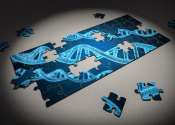'Super melanin' heals skin injuries from sunburn, chemical burns
Imagine a skin cream that heals damage occurring throughout the day when your skin is exposed to sunlight or environmental toxins. That's the potential of a synthetic, biomimetic melanin developed by scientists at Northwestern ...
Nov 2, 2023
4
129








